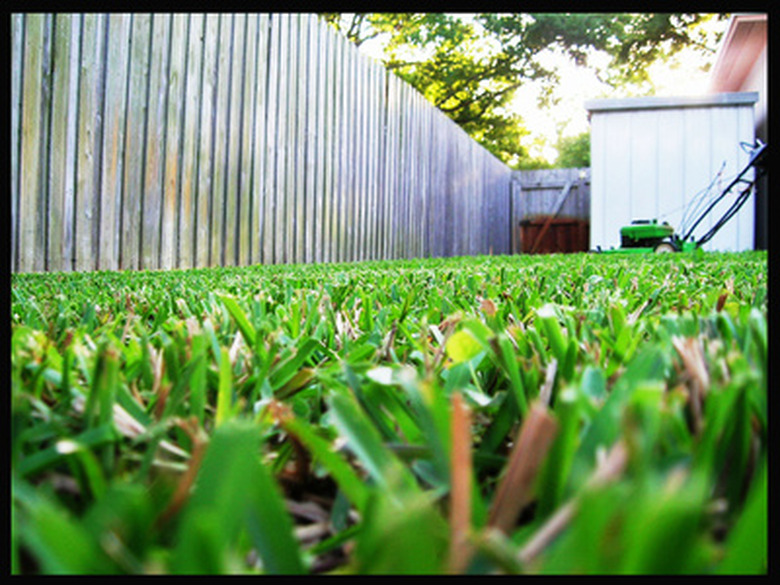How To Troubleshoot A Snapper Riding Mower That Will Not Start
Things Needed
-
Battery tester
-
6 volt battery charger
-
Flathead screwdriver
-
Carb cleaner
-
Air filter
-
Socket wrench and ratchet
-
Foot-pound torque wrench
-
Spark plug
Snapper riding mowers use Briggs & Stratton engines, which are typically very easy for the novice to repair. All engines, and especially small engines, require three things to run properly if they are electric start: spark, gas, air and a charged battery. Troubleshooting and fixing your Snapper riding mower at home will save you the large mechanic bill and will require a few common tools, as well as a battery tester and charger.
Step 1
Turn on the battery tester. Switch it to the 6-volt setting, as small engines use 6-volt batteries. Flip up the seat on the mower to expose the battery located below the seat. Touch the red probe on the tester to the positive post on the battery. Touch the black probe on the tester to the negative post on the battery. The meter should read between 5 to 6 volts. If it doesn't, then you will need to charge the battery with a 6-volt battery charger.
Step 2
Unscrew the gas tank cap and make sure there is fuel in the tank. If so, follow the fuel line from the gas tank to the side of the carburetor. Squeeze the spring-loaded clamp holding the hose onto the carburetor with the pliers and slide it off the hose. Pull the gas hose off and point it into the gas tank.
Step 3
Spray carb cleaner into the side of the carburetor. Unscrew the bolt from the base of the carburetor and pull off the fuel bowl. Dump out all the gummy gas in the fuel bowl. Spray carb cleaner into the fuel bowl and onto the float above the bowl. Tighten the fuel bowl back on and clamp the gas hose back onto the carburetor. Cleaning the carburetor should be done if the engine sounded like it was dying or like it needed gas while it was still running.
Step 4
Unscrew the wingnut holding the cover over the air filter on top of the engine. Pull the cover off and inspect the air filter. If the air filter is dirty or oily, then the engine isn't getting the proper amount of air to mix with the fuel for injection and won't start. Replace the air filter if it is dirty. Tighten the cover back over the air filter.
Step 5
Pull the cap off of the spark plug on the front of the engine. Unscrew the spark plug with the correct sized socket. Inspect the spark plug. If the gap at the end of the spark plug is filled with oil and grease then the engine won't start because there is no spark. Tighten a new spark plug in with your fingers. Fit the socket onto the foot-pound torque wrench and tighten the spark plug in until the torque wrench meter reads 15 ft-lbs. Replace the spark plug cap.
